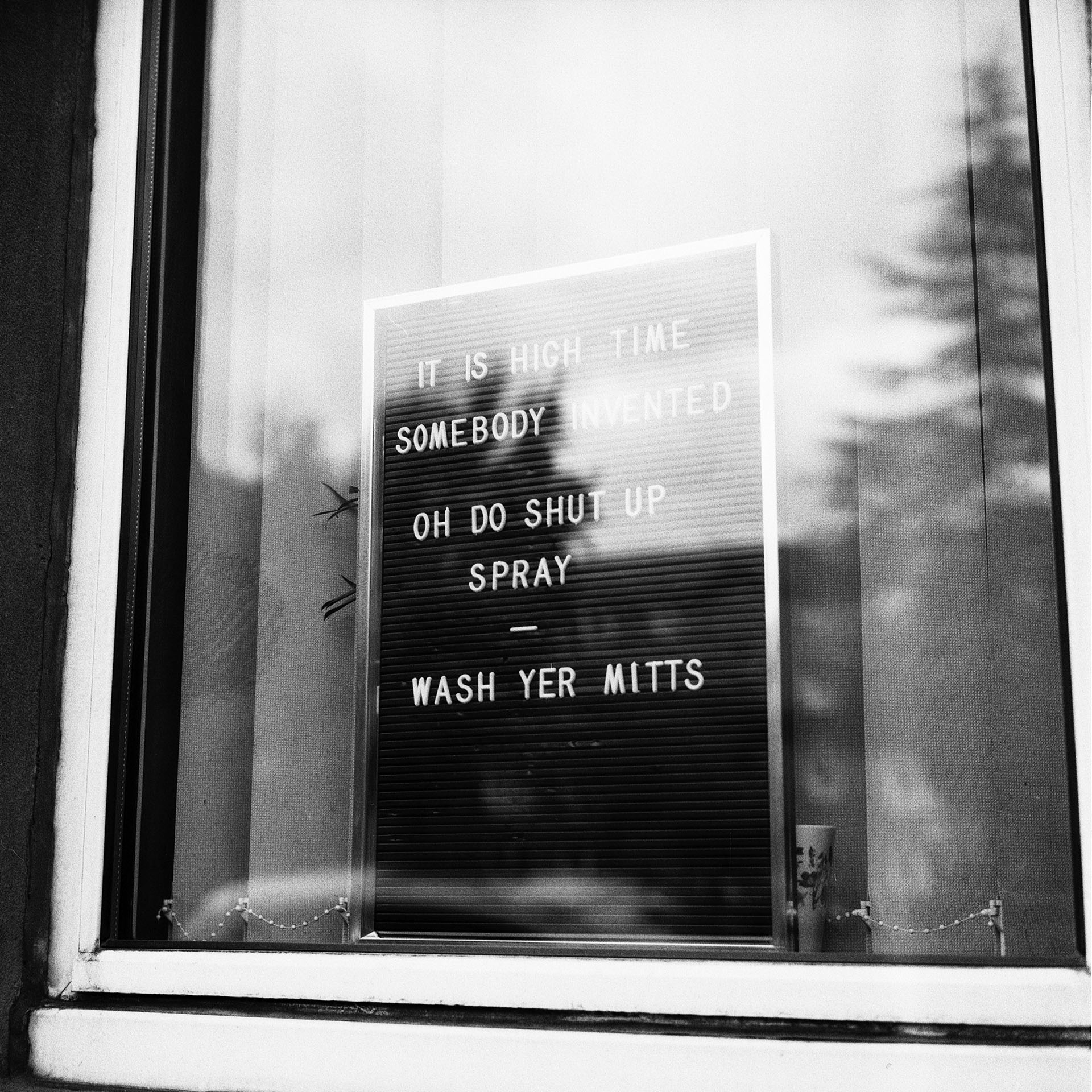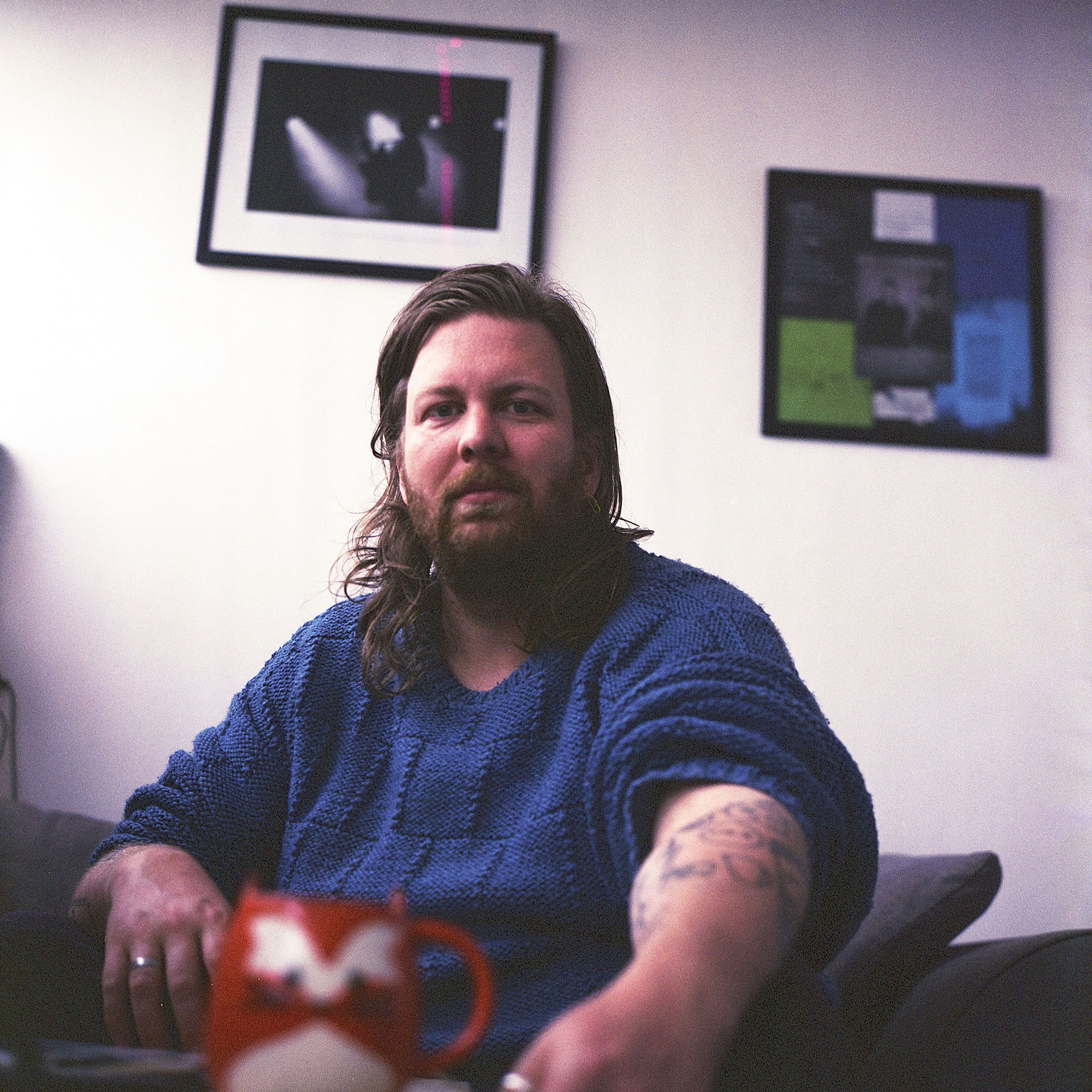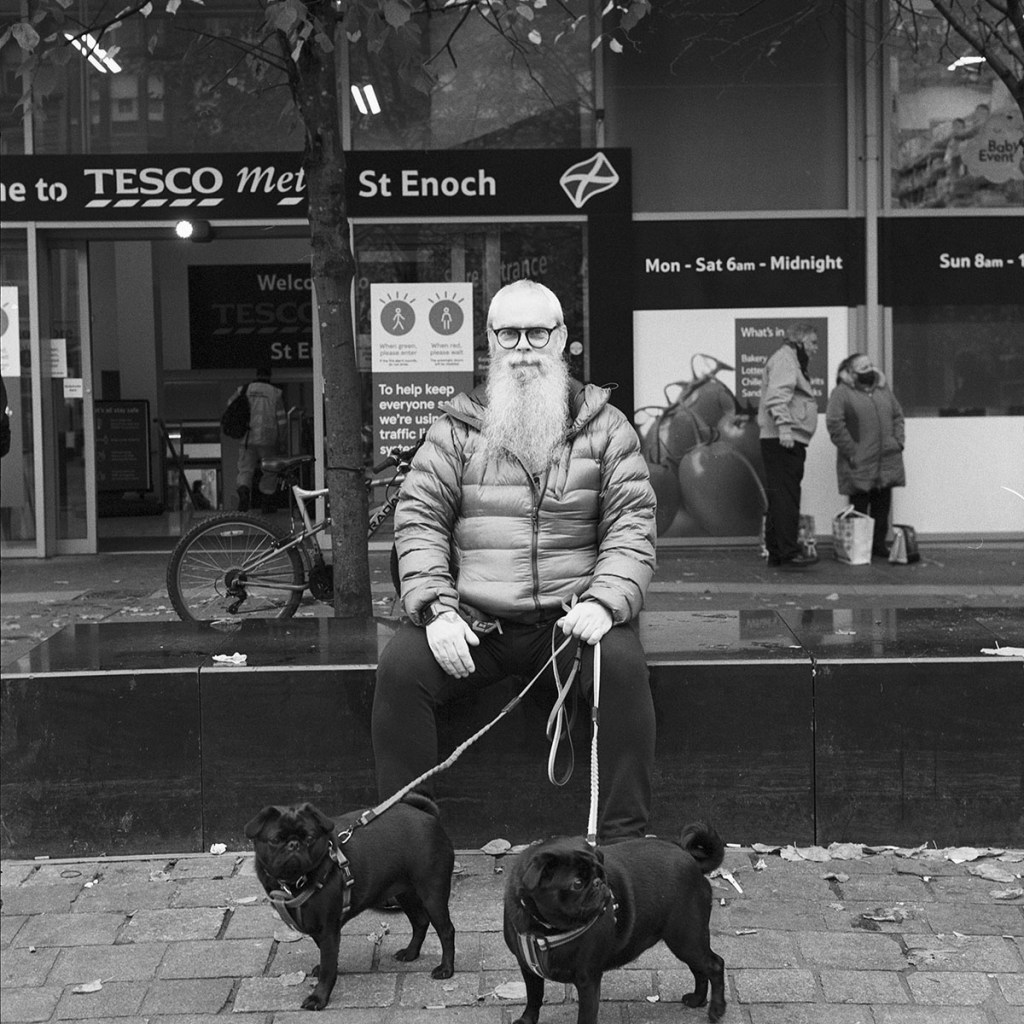There are a few names in the world of photography that carry with them a certain weight; names that have a certain aura and mystique about them. Rollei is one of those. For those of you not familiar with these legendary creatures, the Rolleiflex is a twin lens reflex (TLR) camera. That means that there is two lenses: one for viewing the image, and another for actually taking the picture. Produced in Germany from the 1950s, the cameras have a long history and reputation for being extremely well built and designed. Many illustrious photographers have used one, including Vivian Maier, and more recently… me.
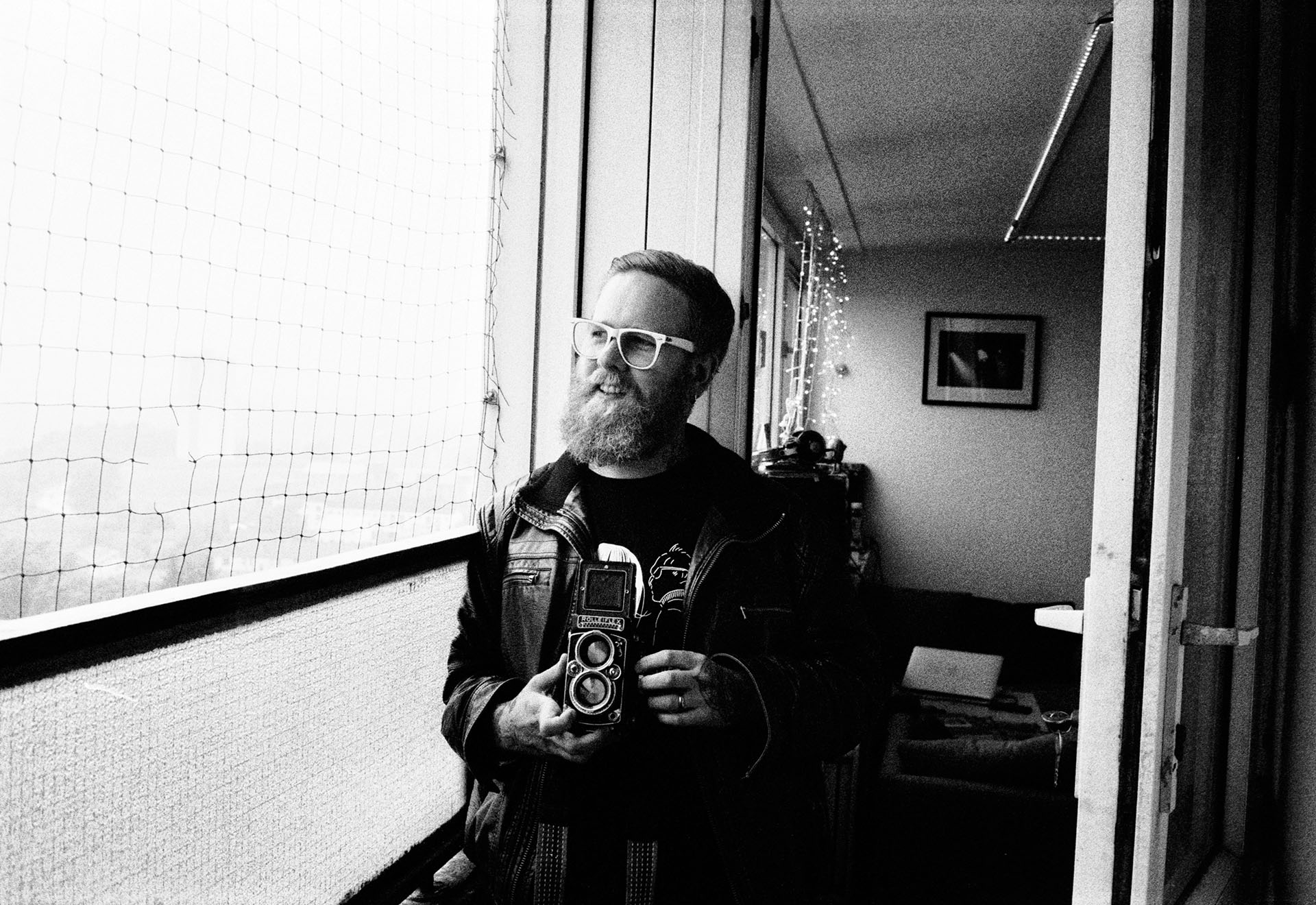
There are various models of the Rolleiflex available – all of which have slightly varied features. Whole books have been written on this topic, so I won’t go into them in too much detail here… (for that, I would recommend ‘The Classic Rollei: A Definitive Guide‘ by John Phillips). However, there are some important things to note:
- f2.8 v f3.5 – Different versions of the Rolleiflex have a wider maximum aperture. The f2.8 version, as one might expect, tends to be more expensive.
Feature spec
Waist Level Finder
Standard on many medium format cameras, the Rolleiflex sports a waist level viewfinder, meaning that you look down onto, and focus using, a large piece of ground glass rather than bringing the camera up to your eye. This is superb for lots of reasons, not least because you have a much larger surface area to view the image on… but also because you are able to take much more natural pictures without people feeling the same kind of pressure that comes from having someone look directly at them through an eye-level viewfinder.
The tricky thing with WLFs is that the scene doesn’t necessarily move in the direction you might intuitively expect when you are composing. It doesn’t take much to get used to, but it is always amusing to see someone try and focus the camera for the first time for this reason…
Performance
Did I mention that the Rolleiflex has a reputation for being extremely well built and designed? You can see this attention to detail when you take a closer look at the specific features. For example, the lens cap has a really clever twist and lock design, which keeps it far more securely in place than the standard clip-on caps from other manufacturers. Likewise, there are no foam seals in the Rolleiflex to keep out light leaks, as the design of the rear of the camera fits so tightly and perfectly in place that they aren’t required. This is of particular note because so many issues that crop up with vintage cameras can be traced to either foam seals which have dissolved over time, or the crappy glue that was used to keep them in place. Finally, while the strap’s proprietary locks are a bit annoying (more on that below), they were made this way specifically to ensure that the strap would fall outwards, and away from the finder, so that the excess won’t obscure your vision when you are trying to focus. Smart.
Sharpness
The lenses that came with the Rolleiflex (in particular, the Planar) are renowned for their sharpness – and so I expected the pictures to look pretty good. However, from the very first roll, the negatives from this camera are some of the sharpest I’ve ever seen.


Bokeh
The shot below was one of the first portraits I took with the Rolleiflex, and you can just about see that I missed the focus point slightly, but it’s a good example of how interesting the bokeh can look.
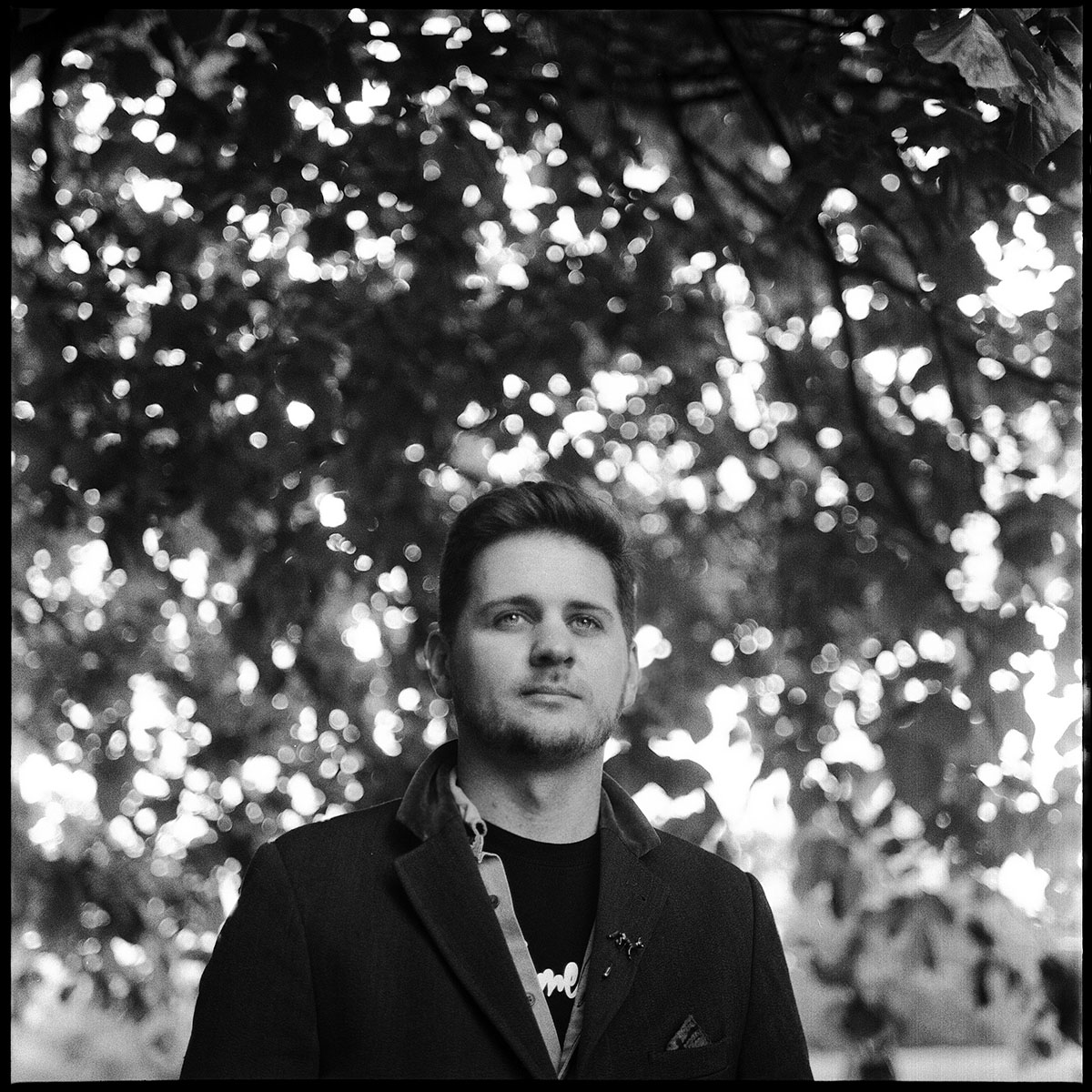
Rolleikin
One thing that deserves a special mention is the Rolleikin adaptor, which lets you shoot 35mm film with the Rolleiflex. Now, this isn’t a particularly mind blowing concept, as people have been shooting 35mm in medium format cameras for ages with 3d printed adaptors. However, the special thing about the Rolleikin is that it adapts the camera’s features specifically so that it works as smoothly and as well as it does with 120 – including being able to rewind the film back into the cannister, and not having to contend with film spacing problems.
There are a few different models of the Rolleikin out there, corresponding to different Rolleiflex cameras. Some of the earlier models require you to replace the full film back with a dedicated 35mm version, or to install a special 35mm film counter knob. However, mine wasn’t one of them. All it needed was a mask to drop in to the waist level finder, and a couple of bits and bobs to transport the film correctly.
Of course, like everything else when it comes to vintage film cameras, I discovered too late that even within the later Rolleikin models, the ‘feed chamber extension spindle’ part comes with two different kinds of screw threads… and the one included with the set I got was the wrong one. Finding the right one can be tricky, as most sellers on eBay don’t know about, or understand how to list the difference – so you either need to ask for pictures (which is also fraught with difficulty), or find a set which includes both kinds of spindle.
Despite having used the Rolleiflex for some time… I still haven’t gotten any pictures with the Rolleikin yet. So eh, make of that what you will.
Things to Watch Out For
- Strap lugs: The Rolleiflex uses a ‘scissor’ style strap lug, which means that regular straps will not fit correctly through the hole. As a result your choice is pretty limited. Convertor lugs are available, but they are very expensive. I personally got around this for a long time by half-forcing a standard ‘o’ ring into the available space and hanging the strap off of that – but it wasn’t perfect. I eventually found some scissor clip adaptors from Hong Kong for cheap.
- Focus magnification: If you want to shoot wide open at f2.8, nailing the focus is important, and use of the hood magnifier will be essential. Unfortunately, if you wear glasses, the magnifier lens doesn’t help much. Thankfully, on the 2.8E you can pop out these lenses and replace them with a diopter relevant for your eyesight. For example, I need a -4 diopter to balance out my glasses. These diopters can be tricky to find though, and the range is limited. In the end, I managed to get one at -3, which helped a lot.
- Lens Condition/Servicing: As these cameras are over 50 years old and were designed to be serviced fairly regularly, it is of course common that they will need some kind of adjustment. Even those which are described as in great condition will inevitably have some weird issues. The most important thing is to ensure that the lenses are free from scratches, fungus, or any other kind of ‘cleaning marks’ – as this isn’t something that can be fixed later on.
My Experience
I have been a particular fan of medium format cameras for a long time, and found the square frame to be especially good for portraiture. While I have primarily used a Hasselblad, I’ve also owned a few different TLR cameras – and while I liked them, I never found the perfect one. The Mamiya C330 was too bulky, and the Yashica Mat 124G wasn’t quite ‘professional’ enough… The biggest problem though is that I really struggled to focus accurately with TLRs, as many of them don’t allow you to swap out the magnifying lens for one that would help with my terrible eyesight.
However, I wasn’t to be deterred that easily. If I was going to give up on TLRs completely, then I couldn’t do so without trying out the legendary Rolleiflex first. I scoured eBay for many months until one came up at a relatively affordable price, and pulled the trigger. When it turned up, it was as beautiful as I had hoped, with a really solid build, and beautiful large lenses – while also somehow managing to be relatively compact. From the first few rolls I ishot, the pictures came out extremely nicely.

Of course, the old problems I had with focussing set in, and as I was under the impression that the diopter couldn’t be replaced in my model, I rather sadly began to leave the Rolleiflex on my shelf, rather than risk losing out on shots because of it. It wasn’t until months later, after looking up the manual for some other reason that I discovered the magnifying lens could be popped out and replaced. This changed everything.
Street Pictures
One thing that always struck me when I saw Vivian Maier’s pictures for the first time was just how often she would be shooting apparently candid images in the street with a Rolleiflex. How on earth did she manage to take shots like that on such a large and overtly conspicuous camera? As someone who had battled with trying to stay invisible for a long time, doing so with a TLR seemed impossible. However, it hit me one day that one of the very reasons I loved shooting portraits with medium format cameras was also the reason that they would make great street photography cameras: The waist level finder.

Since most people don’t know or understand what a WLF is, you can effectively point the camera right at someone, and they won’t realise that you’re taking a picture. Yes, the novelty value of seeing a camera like that in the wild can attract some attention, but to most people it simply looks like you are looking down, trying to figure out a problem with your weirdo camera. Coupled with the incredibly quiet shutter of the Rolleiflex, you can get wonderfully candid pictures very close up in this way. If you can work up the nerve, that is. It’s still a work in progress for me.

Cost and Availability
Obviously these cameras are no longer manufactured, and so any one you come across will inevitably be pre-owned. That isn’t a big deal in of itself, as there are still plenty of them out there. However, because of their formidable reputation, they are expensive, and finding one which is in decent condition which doesn’t cost the earth can be a real challenge. I love old cameras, and medium format in particular – but even for me, stumping up over a Grand for a TLR is extremely hard to justify. If nothing else, at about £5 a roll for 12 frames, it simply isn’t economical to shoot 120 film regularly – at least not with the frequency that would make such an expenditure worth it.
In my case, I was very lucky to find one for just over £500, with lenses which were in very nice condition. However, I did have to get a CLA to sort out a couple of minor issues like a sticky shutter button and some film transport problems. There was also a piece of metal broken in the finder which meant that I couldn’t use the direct view finder. With that in mind, and the added cost of the service, in hindsight I would probably have liked to pay a little bit more for a 2.8F model in perfect condition.
However… the reality was that there was no way for me to try out a Rolleiflex before buying one, and I just had to take the leap. I’ve also had plenty of cameras that said they were recently serviced which quite clearly weren’t, so there will always be an element of caveat emptor.
What was I saying again? Oh, yeah. The bottom line is that the Rolleiflex is a beautiful camera which deserves its reputation. If you are just starting to get into shooting with medium format film, then I would probably suggest trying out something like the Yashica Mat 124G first, before diving in headfirst and prompting a potential fraud check on your credit card. However, if you are already familiar with TLRs, then the Rolleiflex is quintessential, and you will almost certainly love it. Even though the price tag is exceptionally steep, it is part of photographic history, and something that should continue to help you produce really stunning pictures for years to come.
If you wear glasses, make sure you can source a diopter first though, or focussing will be miserable.
Images










